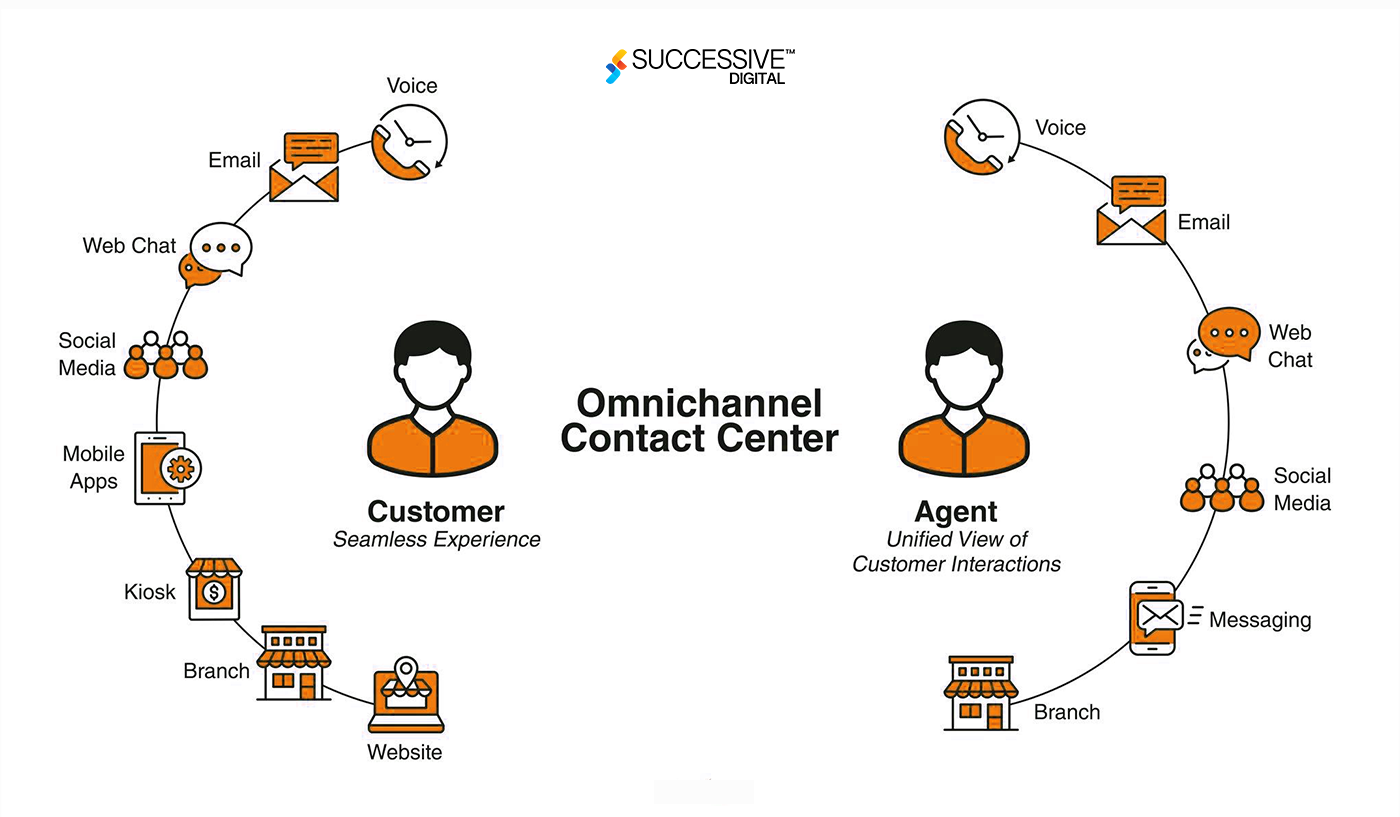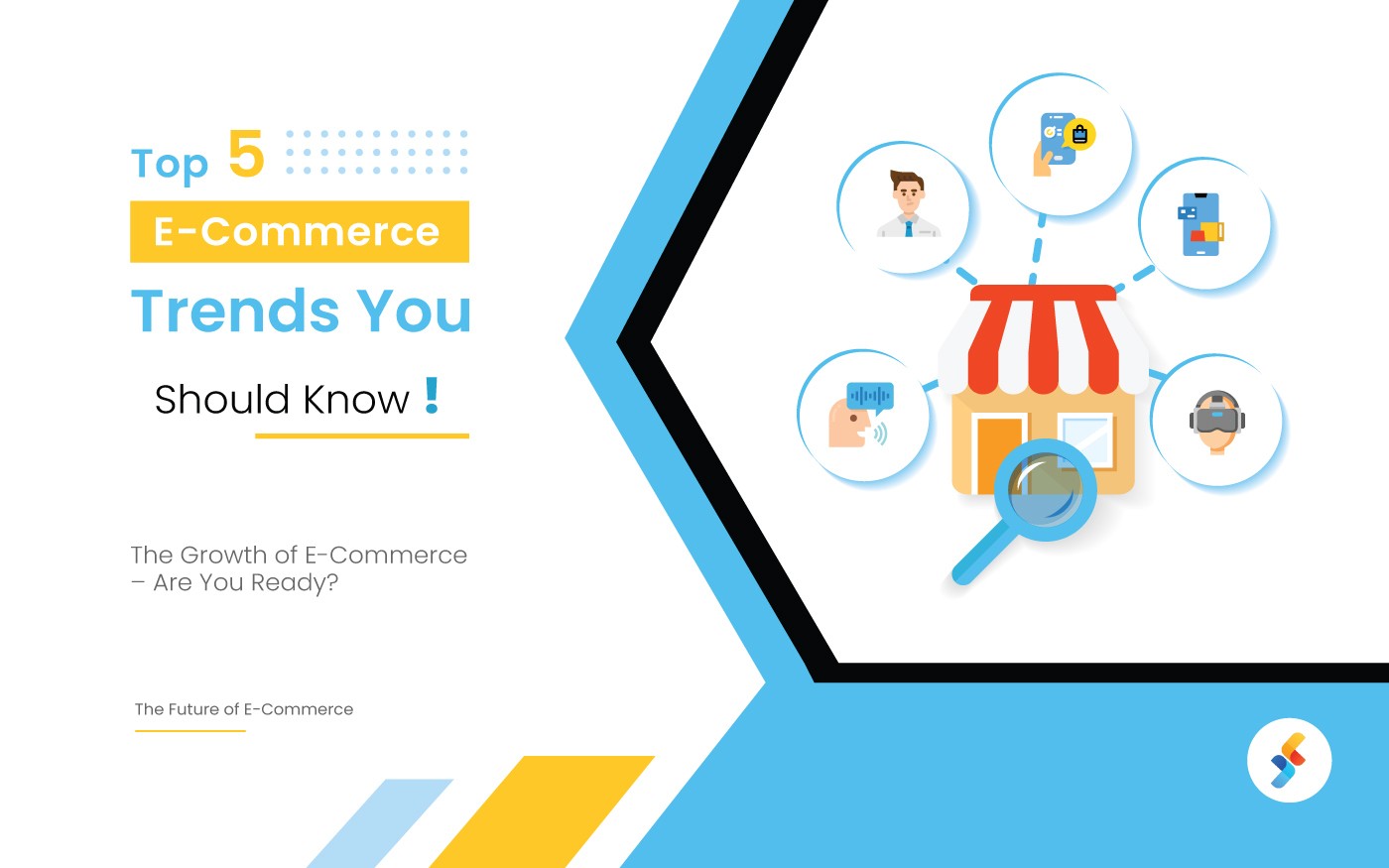As the global digital landscape rapidly evolves, companies face an immediate need to develop, transform, and grow alongside. Adopting seamless enterprise eCommerce solutions across all business platforms is no longer an option; It’s a way of surviving in a hyper-competitive market. This integration of online convenience and offline engagement is not just a market trend but a new reality of modern business.
Enterprises must transcend traditional boundaries and embrace holistic approaches, seamlessly integrating digital and physical realms to deliver exceptional customer experiences. Gone are the days of siloed operations and disjointed communications; sophisticated consumers demand consistency and comfort across all touchpoints, whether surfing the internet, shopping in-store, or communicating their desires to the brand for support.
With an integrated approach, organizations prepare to face the competition and develop lasting relationships with their target audiences, implementing long-term success in an emerging marketplace.
Embracing an Omnichannel Approach

-
Integrated Inventory Management:
Implementing a centralized inventory management system that provides real-time inventory visibility across all channels, allowing order processing to succeed equally and reduce stockouts.
-
Cross-Channel Communication:
Facilitates communication and interaction between online and offline channels, seamlessly allowing customers to switch between digital and physical mediums without external interference.
-
Easy Fulfilment Options:
Flexible fulfillment options include buy online, pick up in-store (BOPIS), drop-shipping, and same-day delivery to meet customer preferences and enhance the buyer’s experience.
-
Data Integration and Insights:
Integrate data from all channels to gain comprehensive insights into consumer behavior, choices, and purchase patterns. This will enable customized recommendations and advertising campaigns that focus on better sales.
-
Optimized Customer Service:
Provide consistent and efficient customer support across all channels, ensuring that queries and problems are addressed directly and successfully, regardless of point of contact.
Implementing Unified Inventory Management
Integrated stock control structures that provide real-time visibility into product availability across all channels are central to the omnichannel experience. Unified inventory management enables a seamless centralized stock control and management platform, keeping teams aware of stock-outs, reducing redundancies, and executing orders effectively.
Leveraging Click-and-Collect Services
The use of click-and-collect features is transforming the shopping experience by providing unmatched convenience and flexibility. As one of the trending eCommerce features, this new option allows customers to browse and purchase online when interested and then collect their orders at the nearest physical store or location of their choice.
Bridging the gap between online browsing and store pickup, companies are extending streamlined user experience and buyer satisfaction. The click-and-collect offering also represents a seamless hybrid integration of online and offline retail, catering to the evolving preferences of new and more discerning consumers.
Embracing Showrooming
Showrooming, the practice of browsing in-store before purchasing online, gives companies a unique opportunity to showcase their products and offer customer support in person. If showrooming is used as a revenue stream, it will enhance businesses’ support, creating a better customer experience and increased conversations.
Personalization and Customer Data
In an increasingly modern, interconnected world, brands are riven by consumer data and have realized that personalization is the cornerstone of marketing. It is not just about expertise in customer preference anymore; it tends to build meaningful connections, offering customized recommendations that resonate with user needs. By leveraging data analytics, organizations can generate insights into customer behavior, preferences, and trends, enabling businesses to anticipate desires and expectations.
Hyper-personalization applies to everything that touches a user’s shopping journey, from online browsing to in-store transactions. By leveraging customer data to create recommendations, promotions, and personalized communications, companies can drive loyalty, increase long-lasting engagement, and ultimately, brand trust.
Providing Seamless Customer Service
- Multichannel Accessibility: Customer service is delivered across multiple channels, including smartphones, email, chat, and social media, ensuring customer accessibility and convenience.
- Integrated Customer Profiles: Combining data from online and offline transactions for a seamless transition between channels and allowing teams to view each customer’s records and choices comprehensively.
- Timely Responses: Fast responses to questions and effective handling of issues demonstrate a commitment to customer satisfaction and create consensus and loyalty.
- Proactive Communication: Communication with proactive updates that address customer desires and complement the overall user experience helps reduce potential friction.

- Continuous Improvement: Collecting data and analyzing customer interactions enables businesses to identify potential areas of improvement and optimize their customer support processes over time.
Harnessing Data Analysis
Applying data analytics in enterprise-level eCommerce solutions is a powerful tool to unlock valuable insights and drive informed decision-making capabilities within an organization. Businesses can benefit from more detailed information on consumer behaviors, preferences, and characteristics by delving into the data of store purchases with user records collected in online and offline channels.
Businesses can harness the true potential of data analysis by using sophisticated analytical techniques such as predictive modeling, segmentation, and trend analysis to mine patterns, anticipate fateful events, and adapt strategies to customer needs. The changing business environment empowers them to maintain user choice and behavior as a core element in designing business strategy.
Businesses can refine their eCommerce channels through decoding, ensuring well-crafted and resonant marketing communications. Fact-driven insights are a compass to guide companies through unpredictable market waters, enabling them to set a roadmap toward revenue and related consistency.
By embracing data-powered techniques, teams can make informed choices, mitigate risks, and exploit the growing possibilities, ultimately driving growth and development in the dynamic global eCommerce landscape.
Real-Life Examples of Effective Strategies
Nike: Nike has successfully integrated innovative eCommerce platform features into its offline channels through its Nike App and NikePlus Club application. Customers can browse and shop online, reserve articles for in-store pickup, and access unique products and ideas through the app, adding to the seamless omnichannel experience.
Target: Target offers a click-and-collect service through its Drive-up and Order Pickup options. This allows customers to consolidate their orders and pick them up at specific pickup points or curbside. This convenience has built a reputation among consumers, speeding up sales and increasing footfall for visitors to target stores.
Starbucks: Starbucks has implemented mobile ordering and in-store pickup facilities to tailor customer tastes and streamline operations. Customers can order and deliver their beverages through the Starbucks app and then pick up their orders at targeted checkouts or counters, reducing wait times to improve performance.
Amazon: Amazon is a leader in showrooming, leading the charge with modern Amazon Go stores. These modern offerings redefine the buying landscape with a cashless experience, pushing the current generation to go more digital.
To an Amazon Go store are free to browse at their leisure, unconstrained by traditional checkout options. The consumer can complete their purchases using the simple Amazon Go application, eliminating the friction often associated with traditional retail stores. This approach transforms the shopping journey into a seamless experience, demonstrating Amazon’s commitment to innovation and customer focus.
Integrating enterprise eCommerce solutions across online and offline channels requires a comprehensive approach that prioritizes and strategizes unified customer experience, personalized communication, and insights driven by user purchase data. By adopting an omnichannel mindset and leveraging the abovementioned strategies, businesses can create cohesive brand experiences that drive customer satisfaction, loyalty, and business success.












